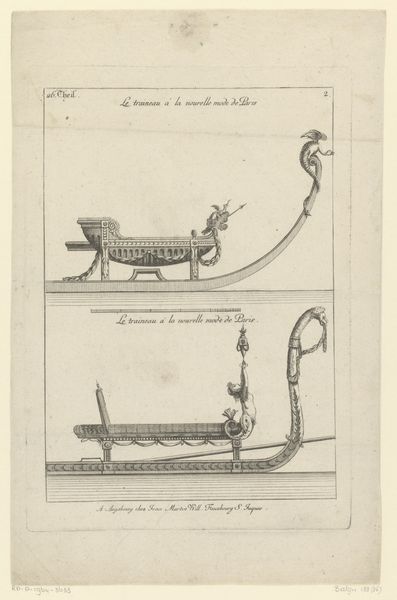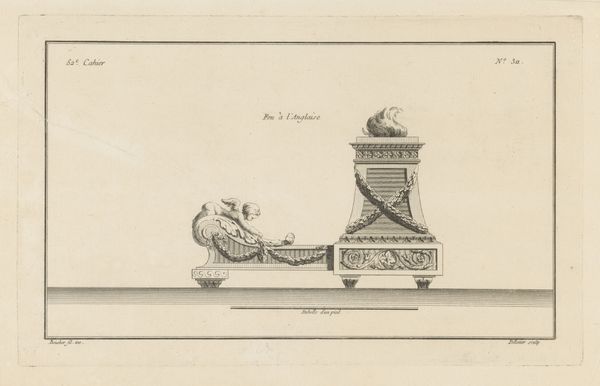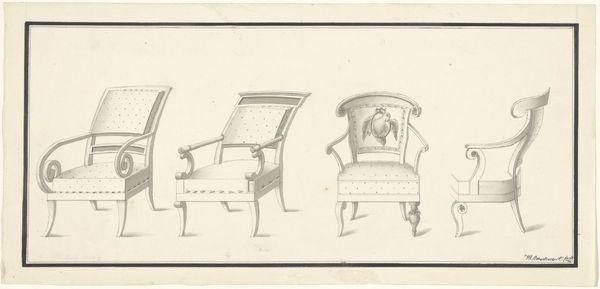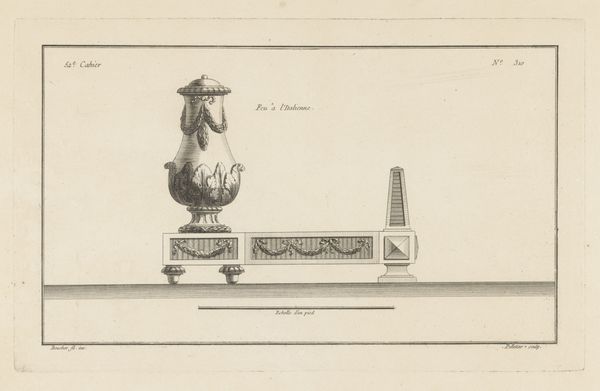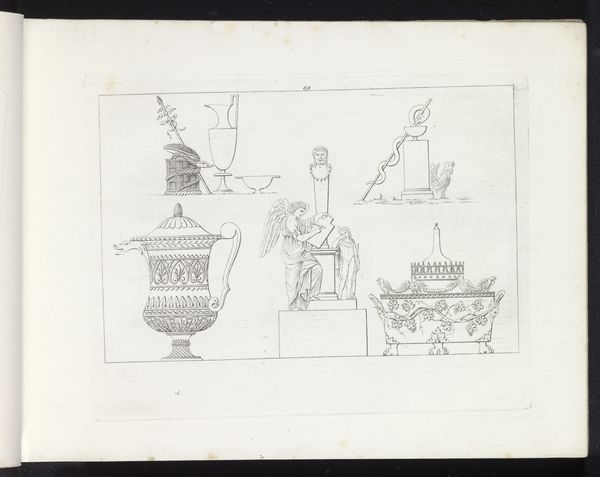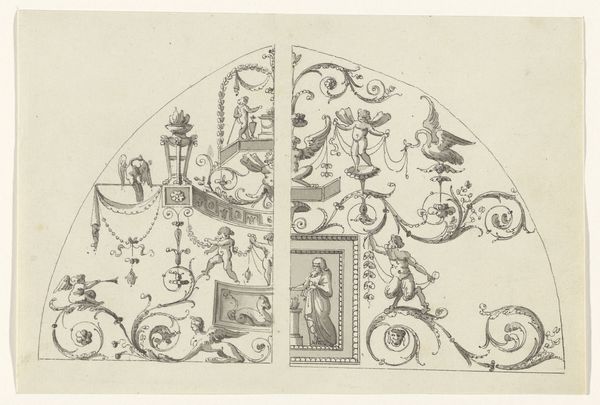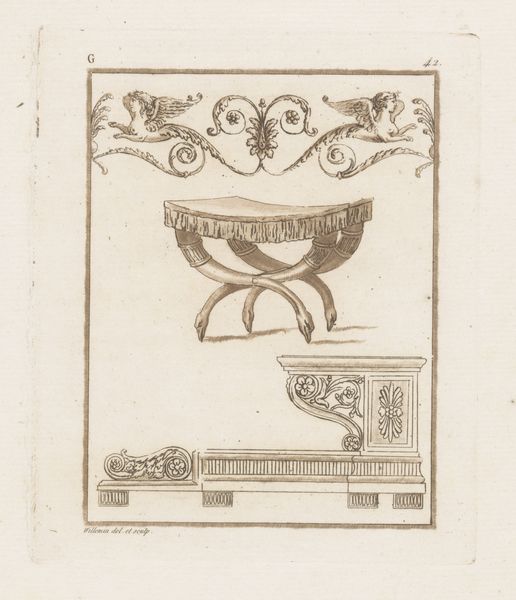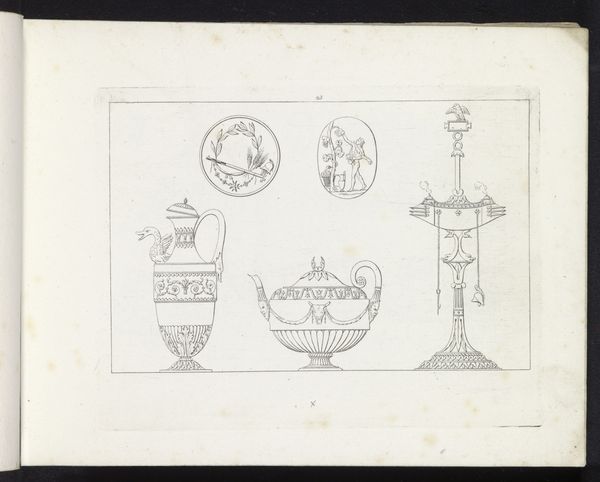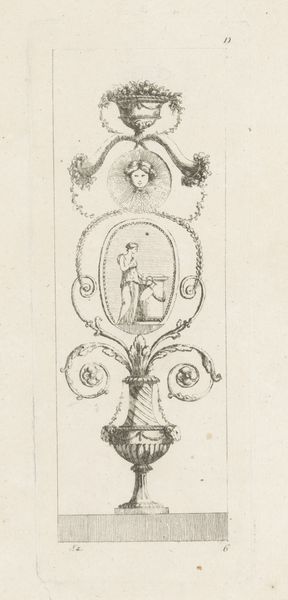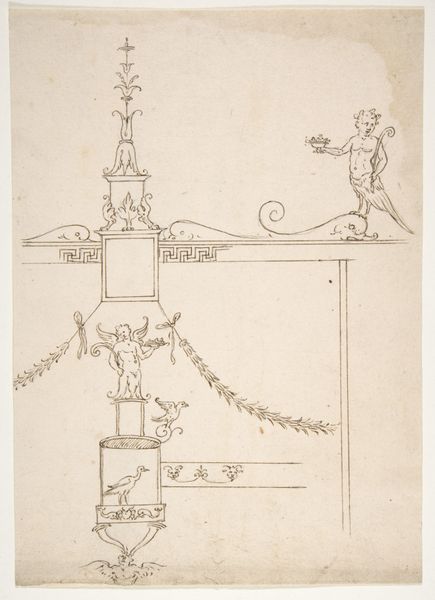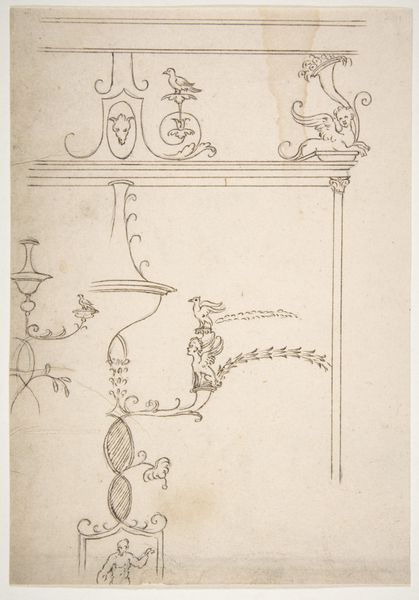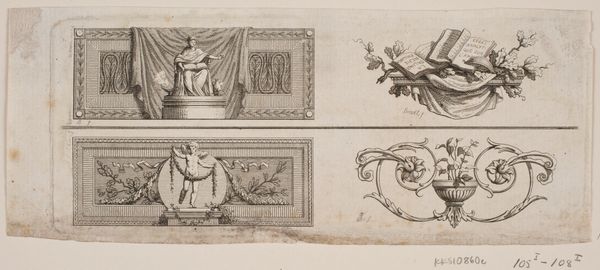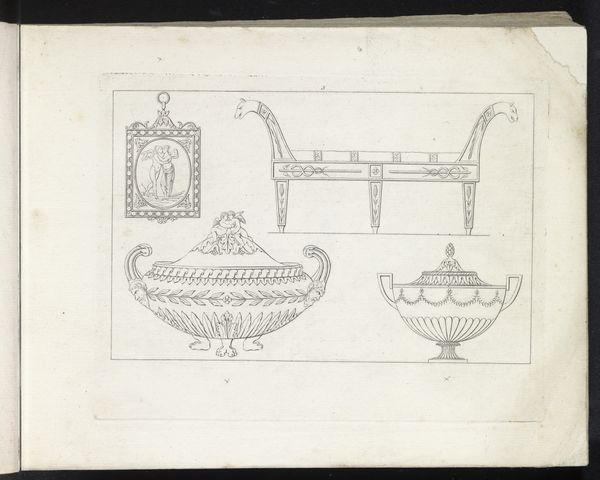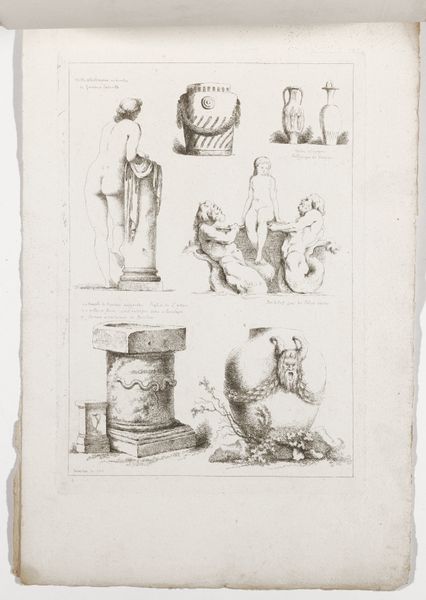
Dimensions: height 294 mm, width 201 mm
Copyright: Rijks Museum: Open Domain
Editor: So, this print, "Sledes met gezichten," which translates to "Sleds with Faces," dates back to somewhere between 1737 and 1806, and it's at the Rijksmuseum. The artist is anonymous. I'm immediately struck by its almost blueprint-like quality. What do you see in this piece? Curator: This print offers us a fascinating glimpse into the cultural landscape of 18th-century Paris. More than just modes of transport, these sleds symbolize a particular brand of aristocratic excess and performance. Consider the French title: "Le traineau a la nouvelle mode de Paris"—"The sled in the new fashion of Paris". What kind of social ritual demands such elaborate design, and who is included or excluded from participating in that ritual? Editor: It definitely seems performative. Were these sleds actually used, or were they more for show? Curator: Exactly! Think about the performative aspect of aristocratic life during that era. These sleds weren't merely functional objects, they were statements of identity. Consider also how gender might play a role. Who were the typical passengers, and how might this elaborate display have been related to courtship or the consolidation of social power? The face motifs included in the design evoke a deeper level of analysis into identity, questioning what ideals of beauty or power were being elevated. Editor: That's really interesting. So it's less about transportation and more about making a statement? It makes me consider the labor that produced such elaborate objects. Curator: Precisely. Who crafted them, and under what conditions? This connects to broader questions of labor and wealth disparity at the time. These designs would have required highly skilled artisans, whose names are now largely lost to history. Reflecting on that forgotten labour, alongside the wealth and status these objects convey, can challenge us to look critically at similar power structures that still exist today. Editor: I see it differently now, less as a simple drawing and more as a layered commentary on social structures. Curator: Exactly. Art allows us a privileged look into history that fosters insightful conversation and relevant contemporary thought.
Comments
No comments
Be the first to comment and join the conversation on the ultimate creative platform.
